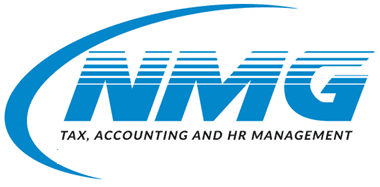Employee Retention Credit, Deferment of Payroll taxes and more..
The Coronavirus Aid, Relief, and Economic Security (CARES) Act was signed into law by President Trump. This new law not only sends rebate checks to taxpayers but also rolls back several provisions of the Tax Cuts and Jobs Act.
Employee Retention Tax Credit
Up to 50% of qualified wages paid between 3/13/2020 and 12/31/2020 are eligible for a tax credit related to COVID-19. In order to qualify the business must have been fully or partially shut down due to COVID-19 or have gross income that is 50% less than the same quarter in the prior year.
Deferment of Employer Payroll Taxes
Employers and Self-Employed taxpayers can defer the employer’s portion of the social security tax (6.2%) to be repaid in equal payments by 12/31/2021 and 12/31/2022.
Expanded Net Operating Loss Deduction
A net operating loss (NOL) of a corporate taxpayer between January 1, 2018 and 2021 generally can be carried back five years preceding the taxable year of such loss.
Repeal of Excess Business Loss Rules
The excess business loss limitation has been repealed for self-employed individuals and owners of pass through businesses for tax years 2018-2020.
Qualified Tenant Improvements Bonus Depreciation
One hundred percent bonus depreciation now applies to qualified improvement property. Qualified improvement property (QIP) is any improvement to the interior of a non-residential building after the building was placed in service, other than elevators, escalators, building enlargements or changes to the building’s internal structural framework. It has a recovery period of 15 years for general depreciation.
AMT Credit Refunds
Under the TCJA Corporate AMT tax credits were refundable over several years with any remaining credits fully deductible in 2021. Under this provision, the corporate AMT credit is now 50% refundable in 2018 with any remaining balance fully refundable in 2019. Additionally, an election can be made applying 100% of the AMT credit to 2018 taxes allowing businesses to potentially amend 2018 tax returns to obtain refunds.
Funding Solution Provisions
Small Business Loans Paycheck Protection Program (PPP)
For businesses with 500 or less employees and in operation on 2/15/2020 new modified loans are made available through the SBA. The amount of the loan is limited to the lesser of $10 million or 2.5 times the borrower’s average total monthly payroll costs. The application period ends June 30, 2020.
The loan proceeds may be used for payroll costs (as defined), employee benefits and commissions, interest payments on mortgages, rent, utilities, and interest on debt incurred before 2/15/2020.
No collateral is required with a maximum interest rate of 4% and a maximum term of 10 years. While interest will accrue from the day the loan is made, not interest or principal payments are required for a 6-12 month period of time. The loan may be paid off at anytime without prepayment penalties.
The PPP loan has a forgiveness provision allowing the borrower to apply for loan forgiveness in an amount equal to the payroll costs, rent, utilities, and interest paid on mortgages during the 8 weeks after the loan is made. The amount of forgiveness will not be taxable to the borrower, but the taxpayer may not use both the loan and the employee retention tax credit as described above.
Economic Injury Disaster Loan (EIDL)
The program currently allows for emergency loans of up to $2M to assist companies affected by COVID-19. The new law waives the requirement for personal guarantees on loans under $200K, it also waives the requirement that the borrower not be able to obtain credit elsewhere, and provide emergency grants of up to $10K within 3 days of the borrower filing an application, though the amount of the grant would reduce any loan forgiveness under the PPP. The law also streamlines the loan application process.
